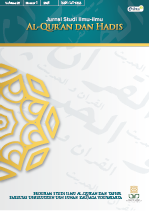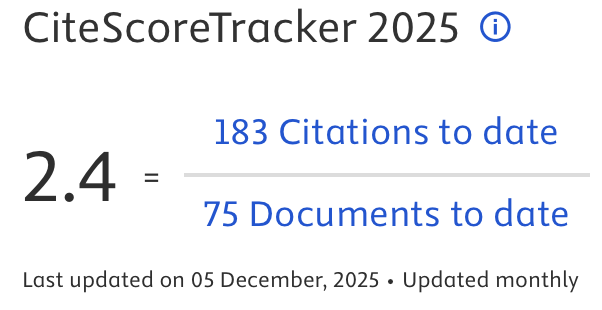REDEFINING THE MEANING OF ASY-SYIFA’ IN THE QUR’AN AS QUR’ANIC HEALING IN PHYSICAL AILMENTS
DOI:
https://doi.org/10.14421/qh.2021.2201-12Keywords:
Alquran, asy-Syifa>”, pengobatan penyakit jasmaniAbstract
In the historical record of Islam, even in the early era of the formation of Islam, the practice of treating the Koran or certain units of the Koran into something meaningful in the practical life of the people has basically occurred. The history of Islam also records the existence of the phenomenon of treating physical ailments by reciting the holy verses of the Koran, for example the al-Fatihah which was read by a companion of the prophet which can remove the effects of poisonous stings. This phenomenon continues and is widely practiced by Muslims. However, not a few consider it an act of shirk because it treats the verses of the Koran as inappropriate for their function and is considered influenced by other cultures that are contrary to Islamic rules. that notion is based on the meaning of the word Asy-Syifa' in the Qur'an which tends to specialize in the meaning of spiritual healing. This article attempts to review the concept of asy-Syifa” in the Qur’an, especially in relation to the use of Qur'anic verses as a method of treating physical ailments. This research is a library research using the theory of Kamaruddin Hidayat concerning the steps of interpretation, namely using the verses of the Koran as a source of interpretation, adding information from the hadith of the prophet and paying attention to the community environment when the Qur'an was revealed and the use of a word used in that community. The results of this research reveal that the word asy-Syifa” in the Koran can also mean a cure or medicine for all kinds of diseases, both mental and physical ailments.
Keywords: Al-Qur’an, asy-Syifa’, treatment of physical ailments
 Abstract viewed: 1834 times
|
Abstract viewed: 1834 times
|
 PDF downloaded = 3345 times
PDF downloaded = 3345 times
References
Adz-Dzaky, M. Hamdani Bakran. Konseling Dan Psikoterapi Islam : Penerapan Metode Sufistik. Yogyakarta: Fajar Pustaka Baru, 2002.
Ainiyah, Luthfiatul. “Penggunaan Ayat-Ayat Al-Qur’an Sebagai Pengobatan (Studi Living Qur’an Praktik Ruqyah Oleh Jam’iyyah Ruqyah Aswaja Tulungagung).” Skripsi, IAIN Tulungagung, 2019.
Alkaf, Idrus H. Penyembuhan Total Melalui Terapi Al-Qur’an dan as-Sunnah (Pekalongan: C. V. Bahagia, 1995.
Aman, Chairul, dkk. Psikologi Qur’ani: Bukan Sekedar Teori. Bandung: Cahaya Iman dan Bedha, 2008.
Aswadi; Konsep Syifa’ Dalam Al-Qur’an : Kajian Tafsir Mafatih Al-Ghaib Karya Fakhruddin Al-Razi . Jakarta: Badan Litbang dan Diklat Kementerian Agama RI, 2012.
Damsyiqi, Ibnu Hamzah al-Husaini al-Hanafi al. Asbabul Wurud: Latar Belakang Historis Timbulnya Hadits-hadits Rasul trans. Suwarta Wijaya dan Zafrullah Salim (Jakarta: Kalam Mulia, 2006
Daryanto. Kamus Bahasa Indonesia lengkap. Surabaya: Apollo, 1997.
Fauzi, Ahmad. “Konsep al-Qur’an sebagai Syifa’: Telaah atas Penafsiran Ibnu Qayyim al-Jauziyyah tentang Penyembuhan Gangguan Kejiwaan dengan al-Qur’an”. Skripsi Fakultas Ushuluddin Universitas Islam Negeri Sunan Kalijaga, Yogyakarta, 2008.
Hidayah, Aida.“Penggunaan Ayat-ayat Al-Qur’an sebagai Metode Pengobatan Bagi Penyakit Jasmani: Studi Living Quran di Kabupaten Demak Jawa Tengah. Skripsi Fakultas Ushuluddin, Studi Agama dan Pemikiran Islam UIN Sunan Kalijaga, 2011.
Hidayat, Kamaruddin. Memahami Bahasa Agama: Sebuah kajian Hermeneutika. Jakarta: Paramadina, 1996.
‘Iwad}alla>h, Muh}ammad as}-S{aba>h}i. al-Istisyfa>’ bi al-Qur’a>n al-Haki>m. Beirut: Dar wa Maktabah al-Hila>l, 1982.
Jauziyyah, Ibnu Qayyim al-. al-Jawa>b li Man Sa’ala an ad-Dawa>’ aw ad-Da>’ wa ad-Dawa>’. Kairo: Da>r al-‘Aqi>dah, 2002.
_______. At}-T{ib an-Nabawi. Beirut: Da>r as^-S#aqa>fah al-Isla>miyyah, tt.
_______. Tafsi>r al-Qayyi>m. Beirut: Da>r al-Kutub al-Isla>miyyah, 2004.
Kurniawan, Syamsul. “Hadis Jampi-jampi dalam Kitab Mujarraba>t Malayu dan Kitab Ta>jul Mulk Menurut Pandangan Masyarakat Kampung Seberang Kota Pontianak Propinsi Kalimantan Barat”, Skripsi Fakultas Ushuluddin Universitas Islam Negeri Sunan Kalijaga Yogyakarta, 2005
Kurniyati, Meilinda Isna. “Penggunaan Ayat Al-Qur’an Sebagai Mediapengobatan Penyakit Jasmani(Studi Living Qur’an Pada Praktik Pengobatan Di Yayasan Cikajayaan, Desa Sidamulya Wanareja Cilacap Jawa Tengah).” Skripsi. IAIN Purwokerto, 2019.
Latif, Umar. “Al-Qur’an Sebagai Sumber Rahmat Dan Obat Penawar (Syifa’) Bagi Manusia.” Jurnal Al-Bayan: Media Kajian Dan Pengembangan Ilmu Dakwah 20, no. 2 (December 22, 2014). https://doi.org/10.22373/ALBAYAN.V20I30.125.
Lawrence, Bruce. Biografi Al-Qur’an trans. Ahmad Asnawi. Yogyakarta: Diglossia Media, 2008.
Manz}u>r, Ibn. Lisa>n al-‘Arab. jilid XVI. Beirut: Da>r-S{adr, 1990.
Muhadi dan Muadzin. Semua Penyakit Ada Obatnya: Menyembuhkan Penyakit Ala Rasulullah. Yogyakarta: Mutiara Media, 2009.
Munawir, Ahmad Warson. Kamus Arab-Indonesia (Surabaya: Pustaka Progressif, 1997
Mursyid, Achmad Yafik. “Resepsi Estetis Terhadap Al-Qur’an (Implikasi Teori Resepsi Estetis Navid Kermani Terhadap Dimensi Musikalik Al-Qur’an).” Universitas Islam Negeri Sunan Kalijaga, 2013.
Perho, Irmeli. “Pengobatan dan al-Qur’an” dalam Dale F. Eickelman, dkk. Al-Qur’an, Sains dan Ilmu Sosial terj. Lien Iffah Naf’atu Fina dan Ari Hendri. Yogyakarta: eLSAQ Press, 2010.
Qarni, ‘Aidh, Al. Tafsir Muyassar 2 terj. Tim Qisthi Press. Jakarta: Qisthi Press, 2007
Rahma, Reezqy. Prinsip Pengobatan Islami, http://bs-ba.facebook.com/topic.php?uid=52419228084&topic=7986, diakses pada tanggal 05 Januari 2011
Rahmat, Jalaluddin. Psikologi Agama. Jakarta: PT Raja Grafindo Persada, 1997.
Ridwan, Benny. “Ayat-Ayat Syifa: Al-Qur’an Sebagai Terapi Psikologis.” Salatiga, 2019. http://e-repository.perpus.iainsalatiga.ac.id/6474/.
Shihab, M Quraish. Wawasan Al-Qur’an Tentang Zikir & Doa. Lentera Hati, 2008.
Shihab, M. Quraish. Tafsir Al-Misbah: Pesan, Kesan dan Keserasian Al-Qur’an vol. 7. Jakarta: Lentera Hati, 2002.
Software al-Maktabah al-Sya>milah al-Is}da>r as^-S^a>ni.
Software Mausu>’ah al-H{adi>s^ asy-Syari>f. versi 2. t.tp: Global Islamic Software Company, 1997.
Syamsuddin, Sahiron (ed.). Metodologi Penelitian Living Quran dan Hadits. Yogyakarta: TH-Press dan Teras, 2007.
Syarbashi, Ahmad, Al. Ensiklopedi Apa dan Mengapa dalam Islam terj. Ali Yahya. Jakarta: Kalam Publika, 2009.
Downloads
Published
How to Cite
Issue
Section
License
Publishing your paper with Jurnal Studi Ilmu-ilmu al-Qur'an dan Hadis means that the author or authors retain the copyright in the paper. Jurnal Studi Ilmu-ilmu al-Qur'an dan Hadis uses license CC-BY-NC-ND or an equivalent license as the optimal license for the publication, distribution, use, and reuse of scholarly works. This license permits anyone to copy and redistribute the material in any medium or format and must give appropriate credit, provide a link to the license, and indicate if changes were made. If you remix, translate, transform or build upon the material you may use it for private use only and not for distribution. Jurnal Studi Ilmu-ilmu al-Qur'an dan Hadis granted an exclusive non-commercial reuse license by the author(s), but the author(s) are able to put the paper onto a website, distribute it to colleagues, give it to students, use it in your thesis, etc, so long as the use is not directed at a commercial advantage or toward private monetary gain. The author(s) can reuse the figures and tables and other information contained in their paper published by Jurnal Studi Ilmu-ilmu al-Qur'an dan Hadis in future papers or work without having to ask anyone for permission, provided that the figures, tables, or other information that is included in the new paper or work properly references the published paper as the source of the figures, tables or other information, and the new paper or work is not direct at a private monetary gain or commercial advantage.
Jurnal Studi Ilmu-ilmu al-Qur'an dan Hadis journal Open Acces articles are distrubuted under the Creative Commons Attribution-NonCommercial-NoDerivatives 4.0 International (CC BY-NC-ND 4.0). Article can be read, copy and redistribute the material ini any medium or format under the following conditions:
Attribution — You must give appropriate credit, provide a link to the license, and indicate if changes were made. You may do so in any reasonable manner, but not in any way that suggests the licensor endorses you or your use.
NonCommercial — You may not use the material for commercial purposes.
NoDerivatives — If you remix, transform, or build upon the material, you may not distribute the modified material.










